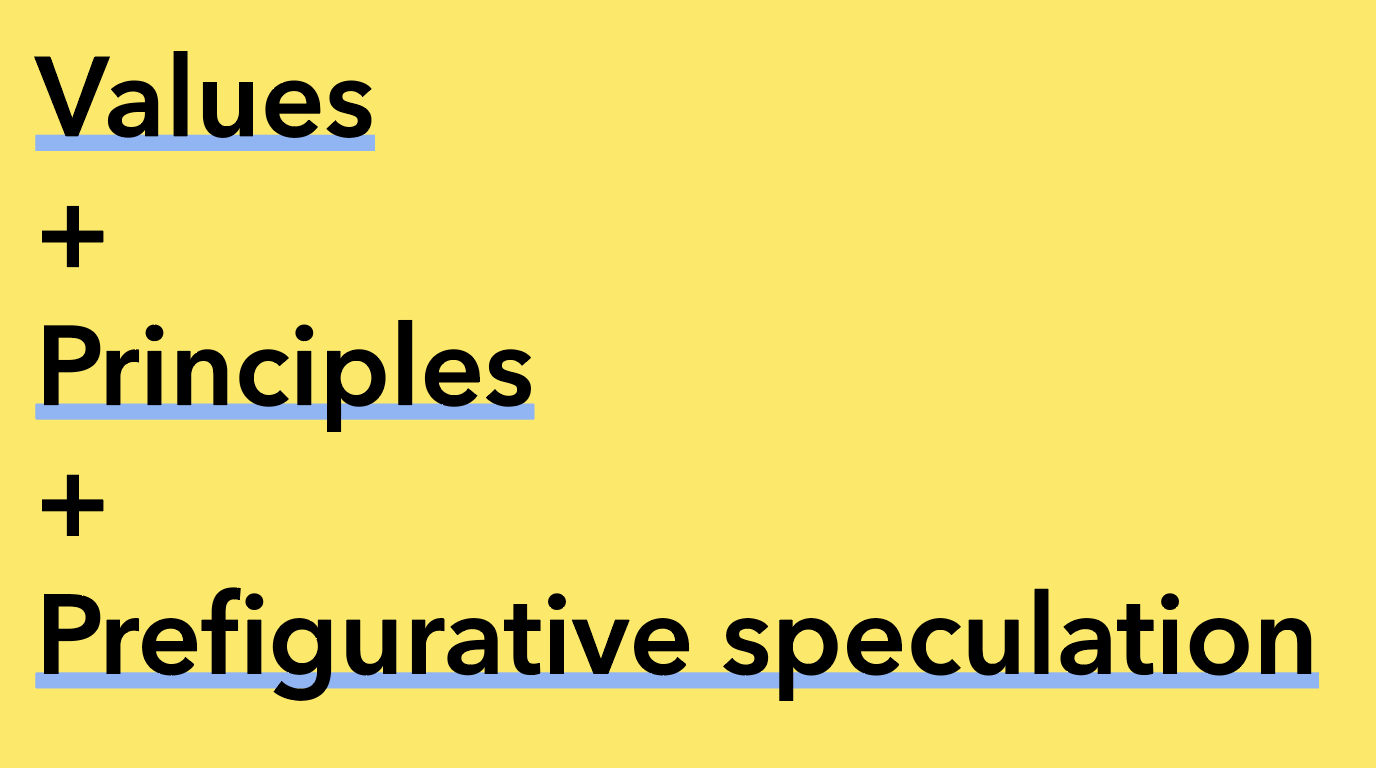Prefigurative Design workshop at RSD9
Sat, Oct 10, 2020
We ran our first workshop (of hopefully many) on prefigurative design at the 2020 the The Relating Systems Thinking and Design (RSD) Symposium.

Prefigurative design involves manifesting qualities of a desired future in a design practice. For example, if one desires a future with non-hierarchical social relations, then a prefigurative design practice would be intentional about incorporating non-hierarchical principles of relating to and engaging with others. We explored prefigurative design practices during an online workshop with attendees of the 9th Relating Systems Thinking and Design symposium. We had over 60 attendees engage in our activities. You can check out our slides here, and read more of the theoretical backround in our session abstract.
Workshop process
While we had originally considered an in-person delivery, given the transition to a virtual symposium we adapted the workshop to an online format. We opted to run a shorter, 90-minute workshop with fewer activities over the videoconferencing platform Zoom on October 10th, 2020. Over 60 attendees joined us, with workshop participants largely self-facilitating by recording their activities and thoughts in a shared Google document. In our workshop, we guided our participants through an activity to create principles aligned with their own desired futures, which they could then speculatively apply in various scenarios and imagine how their own prefigurative practice would play out.
We began our workshop with a guided meditation on daily practices, prompting our participants to think about what they did regularly each day and how they acted in various situations. We then went through a presentation outlining prefigurative design and the rationale for its application. Afterwards, we entered into the 2-phase interactive portion of the workshop.
Phase 1: Values
We began our activities by asking everyone to think about three values they wanted to see the world. We asked: “what is good, beautiful, or constructive? A value denotes what is important. What do you want to be most prioritized in the world?” We gave everyone a few minutes to reflect on this prompt and record their three chosen values in the collaborative document (see Figure 4 for an overview of everyone’s prioritized values).
Phase 2: Principles and prefigurative speculation
In the second part of our workshop, we guided participants through two speculative scenarios, one relating to grocery shopping and another relating to their work and/or design practices. Participants developed principles aligned with their values that might act as guidelines for their behaviour in the different scenarios.
We began this exercise by explaining that principles direct action by “[providing] guidance about how to think or behave toward some desired result” (Patton, 2018). Principles are different from rules as “rules prescribe precisely: You must do this specifically and precisely. Principles provide guidance: Do this in such a way that your actions fit the situation.”
After our participants generated their principles and speculated as to how they might act in alignment with their values in the two scenarios, they shared what they came up with and reflected on the process in small breakout rooms.
Final reflection and discussion
We closed the workshop by giving everyone a few minutes to individually reflect on ways they might already be prefigurative in their practices, or alternatively, ways that their practices could become more prefigurative. After the reflection, we opened the floor to an active group discussion and had several participants stay long after the allotted time to discuss their perspectives with us, some of which are included in the following section.
conference
RSD9
year
2020